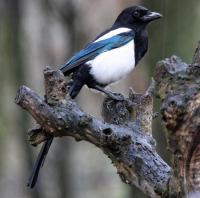- Home
- FAQs
- Customer Video Gallery
- Customer Photo Gallery
- Bird Facts
- Bird Food Blog
- Bird Information
- Feeding Advice
- Small Animal Information
- A to Z of Guinea Pigs
- A to Z of Hamsters
- A to Z of Rabbits
- Basic Care for Guinea Pigs
- Basic Care for Hamsters
- Basic Care for Rabbits
- Basic care for Chinchillas
- Basic care for Ferrets
- Basic care for Gerbils
- Basic care for Mice
- Basic care for Rats
- Buying a Healthy Small Animal
- Does your Reptile need a Licence
- Equipment for Ferrets
- Equipment for Hamsters
- Equipment for Mice
- Equipment for your Chinchilla
- Equipment for your Gerbil
- Equipment for your Guinea Pig
- Equipment for your Rabbit
- Keeping a House Rabbit
- Dog Information
- Cat Information
- Customer Information
- Fat Balls
- Suet Pellets
- Straights
- Seed Mixes
- Suet Treats
- Mealworms
- Bird Feeders
- My Account

| Scientific Name | Phylloscopus collybita |
| Breeding | April-May |
| Fledge Days | 14-16 |
| Incubation Days | 13-14 |
| Lifespan | 2 years |
| Number of Clutches | 1-2 |
| Number of Eggs | 4-9 |
| Size | 10 - 11cm |
| Weight | 6 - 9g |
| Wingspan | 18cm |
Bird Family : Warblers and Allies
Chiffchaff Facts - Information About Chiffchaff
Chiffchaff - Phylloscopus Collybita
The Chiffchaff is one of two similar looking Warblers that spend the summer in the UK. The other, the Willow Warbler is very similar in plumage, but with care can be separated.
Chiffchaffs start to arrive in the UK in March, early birds can sometimes arrive in February. It is also known to over winter in the south of the country.
Identification:
Adult
- The Chiffchaff is a common ‘Phylloscopus’ type Warbler, adult sexes and young birds are all similar in plumage and cannot be identified in the field, males can be easily be separated in spring as they can be seen and heard singing.
- Song is the easiest way to separate this species from Willow Warbler.
- Chiffchaffs and Warblers in general are small birds, similar in size to Blue Tits, around 11cm from tip of tail to tip of bill.
- The upperparts and tail are olive green; underparts are pale grey-olive, buff.
- The Chiffchaff looks duller than Willow Warbler and appears stocky in direct comparison.
- The Chiffchaff is a short distance migrant and due to this has shorter wings than Willow Warbler, giving this stocky look.
- The face is olive with a thin dark eyestripe and a thin dull olive supercilium.
- The dark eye is surrounded by a thin pale eye ring.
- The legs are the key to identification, they are dark combined with the above features and a short dark bill you will be well on the way to a positive ID!
- Legs on Willow Warbler are pale, be careful of shadow!
- When searching for food the Chiffchaff will frequently dip its tail, a trait not shared with Willow Warbler.
- Bill and legs are dark, eyes are black.
Juvenile
- Juveniles appear from April onwards and are identical to adults; however the plumage will appear brighter as the feathers are fresh.
- Legs and bill dark, eye black.
Status and Distribution
The Chiffchaff is an abundant breeding summer visitor, it arrives from March onwards and departs in October. The breeding population is close to a million pairs, it breeds throughout Britain and Ireland.
Each year up to a thousand birds take their chances and winter along our south coast, in bad winters this can be a fatal mistake.
Habitat/Food
Chiffchaffs occur in many habitat types throughout the UK, woodlands, parks, gardens, hedgerows, indeed any woodland type habitat with suitable scrub.
The Chiffchaff feeds on insects, however wintering birds can be found in our gardens searching for food, during this time they will feed on fruit and suet treats.
Song/Call
Song, very obvious run of notes...’chiff chaff chiff chaff’ repeated many times.
Call is a short mournful quick ‘hwiit’, one syllable.









